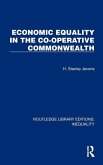Arthur Pigou
The Economics of Welfare
Arthur Pigou
The Economics of Welfare
- Broschiertes Buch
- Merkliste
- Auf die Merkliste
- Bewerten Bewerten
- Teilen
- Produkt teilen
- Produkterinnerung
- Produkterinnerung
The Economics of Welfare occupies a privileged position in economics
Andere Kunden interessierten sich auch für
![New Institutional Economics as Situational Logic New Institutional Economics as Situational Logic]() Piet de VriesNew Institutional Economics as Situational Logic123,99 €
Piet de VriesNew Institutional Economics as Situational Logic123,99 €![Economics Economics]() Donald Rutherford (UK University of Edinburgh)Economics42,99 €
Donald Rutherford (UK University of Edinburgh)Economics42,99 €![History of Economic Thought History of Economic Thought]() E. K. HuntHistory of Economic Thought84,99 €
E. K. HuntHistory of Economic Thought84,99 €![Education and the Social Order Education and the Social Order]() Bertrand RussellEducation and the Social Order36,99 €
Bertrand RussellEducation and the Social Order36,99 €![The Economics of Belonging The Economics of Belonging]() Martin SandbuThe Economics of Belonging25,99 €
Martin SandbuThe Economics of Belonging25,99 €![Economic Equality in the Co-Operative Commonwealth Economic Equality in the Co-Operative Commonwealth]() H. Stanley JevonsEconomic Equality in the Co-Operative Commonwealth122,99 €
H. Stanley JevonsEconomic Equality in the Co-Operative Commonwealth122,99 €![The Economics of Belonging The Economics of Belonging]() Martin SandbuThe Economics of Belonging20,99 €
Martin SandbuThe Economics of Belonging20,99 €-
-
-
The Economics of Welfare occupies a privileged position in economics
Hinweis: Dieser Artikel kann nur an eine deutsche Lieferadresse ausgeliefert werden.
Hinweis: Dieser Artikel kann nur an eine deutsche Lieferadresse ausgeliefert werden.
Produktdetails
- Produktdetails
- Verlag: Taylor & Francis Inc
- Seitenzahl: 948
- Erscheinungstermin: 31. Oktober 2001
- Englisch
- Abmessung: 232mm x 151mm x 51mm
- Gewicht: 1320g
- ISBN-13: 9780765807397
- ISBN-10: 0765807394
- Artikelnr.: 21601471
- Herstellerkennzeichnung
- Libri GmbH
- Europaallee 1
- 36244 Bad Hersfeld
- gpsr@libri.de
- Verlag: Taylor & Francis Inc
- Seitenzahl: 948
- Erscheinungstermin: 31. Oktober 2001
- Englisch
- Abmessung: 232mm x 151mm x 51mm
- Gewicht: 1320g
- ISBN-13: 9780765807397
- ISBN-10: 0765807394
- Artikelnr.: 21601471
- Herstellerkennzeichnung
- Libri GmbH
- Europaallee 1
- 36244 Bad Hersfeld
- gpsr@libri.de
Pigou, Arthur
PART I WELFARE AND THE NATIONAL DIVIDEND I Welfare and Economic Welfare II
Desires and Satisfaction III The National Dividend IV What is Meant by
Maintenance Capital Intact V Changes in the Size of the National Dividend
VI The Measurement of Changes in the Size of the National Dividend VII
Economic Welfare and changes in the Size of the National Dividend VIII
Economic Welfare and changes in the distribution of the National Dividend
IX Reaction through the numbers of the population X The National Dividend
and the quality of the people XI The method of discussion to be followed
PART II The Size of the National Dividend and the Distribution of Resources
of Resources Among Different Uses. I Introductory II The definition of
marginal social and private net products III The values of marginal social
net products and the size of the national dividend IV Rates of Return and
the value of the marginal private net products V The effects of eliminating
obstacles to movement VI Hinderances to equality of returns due to
imperfect knowledge VII Hinderances to equality of returns due to imperfect
divisibility of the units in terms of which transactions are conducted VIII
Hinderances to equality of returns due to the relative variations of demand
for productive resources in different occupations and places IX Divergences
between marginal social net product and marginal private net product X
Marginal private and social bet products in relation to industrial forms XI
Increasing and decreasing supply price XII State regulation of competitive
prices XIII State regulation of supplies XIV The conditions of
monopolisation XV Monopolistic Competition XVI Simple Monopoly XVII
Discrimination monopoly XVIII The special problem of railway rates XIX
Purchasers' Association XX Intervention by public authorities XXI Public
control of monopoly XXII Public operation of industries Part III I
Industrial Peace II The classification of industrial differences III
Voluntary arrangements for conciliation and arbitration IV Mediation V
Coercive intervention V An analytical view of industrial peace VII Hours of
labour VIII The methods of industrial remuneration IX The distribution of
labour among occupation and places X Employment exchanges XI Unemployment
versus short time XII The practicability of interference to raise wages
XIII Methods of engaging labour XIV Interference to raise wages in places
and occupations where they are unfair XV Fair wages inside particular
industries XVI Fairness as a variable relation XVII Interference to raise
wages in places and occupation where they are already fair XVIII Wage rates
and capacity XIXA national minimum time-wage XX Fixed and fluctuating wage
rates Part IV The Distribution of the National Dividend I The general
problem of disharmony II Pareto's Law III The supply of capital and labour
IV Inventions and improvements V The manipulation of wages VI Rationing VII
subsides to wages Part contents/
Desires and Satisfaction III The National Dividend IV What is Meant by
Maintenance Capital Intact V Changes in the Size of the National Dividend
VI The Measurement of Changes in the Size of the National Dividend VII
Economic Welfare and changes in the Size of the National Dividend VIII
Economic Welfare and changes in the distribution of the National Dividend
IX Reaction through the numbers of the population X The National Dividend
and the quality of the people XI The method of discussion to be followed
PART II The Size of the National Dividend and the Distribution of Resources
of Resources Among Different Uses. I Introductory II The definition of
marginal social and private net products III The values of marginal social
net products and the size of the national dividend IV Rates of Return and
the value of the marginal private net products V The effects of eliminating
obstacles to movement VI Hinderances to equality of returns due to
imperfect knowledge VII Hinderances to equality of returns due to imperfect
divisibility of the units in terms of which transactions are conducted VIII
Hinderances to equality of returns due to the relative variations of demand
for productive resources in different occupations and places IX Divergences
between marginal social net product and marginal private net product X
Marginal private and social bet products in relation to industrial forms XI
Increasing and decreasing supply price XII State regulation of competitive
prices XIII State regulation of supplies XIV The conditions of
monopolisation XV Monopolistic Competition XVI Simple Monopoly XVII
Discrimination monopoly XVIII The special problem of railway rates XIX
Purchasers' Association XX Intervention by public authorities XXI Public
control of monopoly XXII Public operation of industries Part III I
Industrial Peace II The classification of industrial differences III
Voluntary arrangements for conciliation and arbitration IV Mediation V
Coercive intervention V An analytical view of industrial peace VII Hours of
labour VIII The methods of industrial remuneration IX The distribution of
labour among occupation and places X Employment exchanges XI Unemployment
versus short time XII The practicability of interference to raise wages
XIII Methods of engaging labour XIV Interference to raise wages in places
and occupations where they are unfair XV Fair wages inside particular
industries XVI Fairness as a variable relation XVII Interference to raise
wages in places and occupation where they are already fair XVIII Wage rates
and capacity XIXA national minimum time-wage XX Fixed and fluctuating wage
rates Part IV The Distribution of the National Dividend I The general
problem of disharmony II Pareto's Law III The supply of capital and labour
IV Inventions and improvements V The manipulation of wages VI Rationing VII
subsides to wages Part contents/
PART I WELFARE AND THE NATIONAL DIVIDEND I Welfare and Economic Welfare II
Desires and Satisfaction III The National Dividend IV What is Meant by
Maintenance Capital Intact V Changes in the Size of the National Dividend
VI The Measurement of Changes in the Size of the National Dividend VII
Economic Welfare and changes in the Size of the National Dividend VIII
Economic Welfare and changes in the distribution of the National Dividend
IX Reaction through the numbers of the population X The National Dividend
and the quality of the people XI The method of discussion to be followed
PART II The Size of the National Dividend and the Distribution of Resources
of Resources Among Different Uses. I Introductory II The definition of
marginal social and private net products III The values of marginal social
net products and the size of the national dividend IV Rates of Return and
the value of the marginal private net products V The effects of eliminating
obstacles to movement VI Hinderances to equality of returns due to
imperfect knowledge VII Hinderances to equality of returns due to imperfect
divisibility of the units in terms of which transactions are conducted VIII
Hinderances to equality of returns due to the relative variations of demand
for productive resources in different occupations and places IX Divergences
between marginal social net product and marginal private net product X
Marginal private and social bet products in relation to industrial forms XI
Increasing and decreasing supply price XII State regulation of competitive
prices XIII State regulation of supplies XIV The conditions of
monopolisation XV Monopolistic Competition XVI Simple Monopoly XVII
Discrimination monopoly XVIII The special problem of railway rates XIX
Purchasers' Association XX Intervention by public authorities XXI Public
control of monopoly XXII Public operation of industries Part III I
Industrial Peace II The classification of industrial differences III
Voluntary arrangements for conciliation and arbitration IV Mediation V
Coercive intervention V An analytical view of industrial peace VII Hours of
labour VIII The methods of industrial remuneration IX The distribution of
labour among occupation and places X Employment exchanges XI Unemployment
versus short time XII The practicability of interference to raise wages
XIII Methods of engaging labour XIV Interference to raise wages in places
and occupations where they are unfair XV Fair wages inside particular
industries XVI Fairness as a variable relation XVII Interference to raise
wages in places and occupation where they are already fair XVIII Wage rates
and capacity XIXA national minimum time-wage XX Fixed and fluctuating wage
rates Part IV The Distribution of the National Dividend I The general
problem of disharmony II Pareto's Law III The supply of capital and labour
IV Inventions and improvements V The manipulation of wages VI Rationing VII
subsides to wages Part contents/
Desires and Satisfaction III The National Dividend IV What is Meant by
Maintenance Capital Intact V Changes in the Size of the National Dividend
VI The Measurement of Changes in the Size of the National Dividend VII
Economic Welfare and changes in the Size of the National Dividend VIII
Economic Welfare and changes in the distribution of the National Dividend
IX Reaction through the numbers of the population X The National Dividend
and the quality of the people XI The method of discussion to be followed
PART II The Size of the National Dividend and the Distribution of Resources
of Resources Among Different Uses. I Introductory II The definition of
marginal social and private net products III The values of marginal social
net products and the size of the national dividend IV Rates of Return and
the value of the marginal private net products V The effects of eliminating
obstacles to movement VI Hinderances to equality of returns due to
imperfect knowledge VII Hinderances to equality of returns due to imperfect
divisibility of the units in terms of which transactions are conducted VIII
Hinderances to equality of returns due to the relative variations of demand
for productive resources in different occupations and places IX Divergences
between marginal social net product and marginal private net product X
Marginal private and social bet products in relation to industrial forms XI
Increasing and decreasing supply price XII State regulation of competitive
prices XIII State regulation of supplies XIV The conditions of
monopolisation XV Monopolistic Competition XVI Simple Monopoly XVII
Discrimination monopoly XVIII The special problem of railway rates XIX
Purchasers' Association XX Intervention by public authorities XXI Public
control of monopoly XXII Public operation of industries Part III I
Industrial Peace II The classification of industrial differences III
Voluntary arrangements for conciliation and arbitration IV Mediation V
Coercive intervention V An analytical view of industrial peace VII Hours of
labour VIII The methods of industrial remuneration IX The distribution of
labour among occupation and places X Employment exchanges XI Unemployment
versus short time XII The practicability of interference to raise wages
XIII Methods of engaging labour XIV Interference to raise wages in places
and occupations where they are unfair XV Fair wages inside particular
industries XVI Fairness as a variable relation XVII Interference to raise
wages in places and occupation where they are already fair XVIII Wage rates
and capacity XIXA national minimum time-wage XX Fixed and fluctuating wage
rates Part IV The Distribution of the National Dividend I The general
problem of disharmony II Pareto's Law III The supply of capital and labour
IV Inventions and improvements V The manipulation of wages VI Rationing VII
subsides to wages Part contents/








